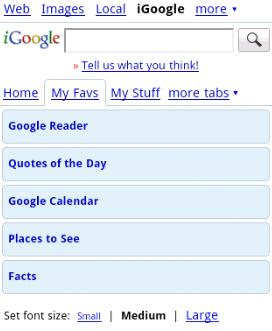 (Cross-posted from the Google Mobile Blog)
(Cross-posted from the Google Mobile Blog)Google Search by voice has grown up quickly. Some might say that search by voice has matured from a toddler to a tween. It's certainly been traveling across the English-speaking world and getting better at understanding a range of accents, from the US, U.K., India and Australia. Today it's taking another big step — we're happy to announce that Google search by voice is available for Nokia S60 phones, and now understands Mandarin Chinese.
Nokia S60 phones are popular around the world. If you have an Nseries or Eseries phone such as the N95 or E71, you're using S60. Many of these phones have 12-digit keypads — good for making calls, but not so easy when you need to type a few words. Many of you have asked if we could build our search by voice feature for these phones, and we've been working on this feature for a while.
The new version of Google Mobile App places a shortcut to Google search on your Nokia phone's home screen, allowing you to search using your voice or by typing. You can search for anything — from "movie times", to "fish 'n chips", to "masala dosa." It doesn't matter if you're in London or Bangalore: we'll use your location to give you nearby results. And Google Mobile App shows search results in the application, so you don't have to wait for a web browser to launch to get an answer.
We always use Google products ourselves before we share them with users. We like to think of this process as "eating our own dogfood" and you can see a video of some early testing here.
Up until now voice search has only been available in English, but the new version of Google Mobile App for Nokia S60 devices works for Mandarin speakers, too. We're really proud of the work we've done with Mandarin speech recognition, both because it's the most spoken language in the world, and because of the engineering challenge. To get Mandarin speech recognition to work, we had to learn a lot about this fascinating language — the differences between traditional and simplified Chinese, its tonal characteristics, automatic segmentation of text into words, pinyin representations of Chinese characters, sandhi rules, the different accents and languages in China, unicode representations of Chinese character sets...the list goes on and on.
Mandarin speakers can now search by voice for complex queries like 清华大学附近的水煮鱼 (which translates to "water-boiled fish near Tsinghua University"). Although this only works on the Nokia S60 at the moment, we're working on adding support for Mandarin speech recognition to our products on other mobile platforms, such as Android and iPhone. And bear in mind that this is a first version of our system in Mandarin, and it might not be as polished as our English version. For example, if you have a strong southern Chinese accent, it might not work as well as for people with a Beijing accent. However, our system will improve over time, so please give it a try!


Google Mobile App in Mandarin Chinese
Note that the application is for version 3 of Nokia S60 — more recent phones running version 5 (touch screen) are not yet supported.
To download the new version of Google Mobile App on your Nokia S60 phone, visit m.google.com from your phone's browser.








